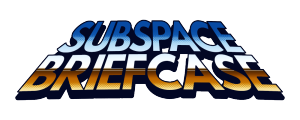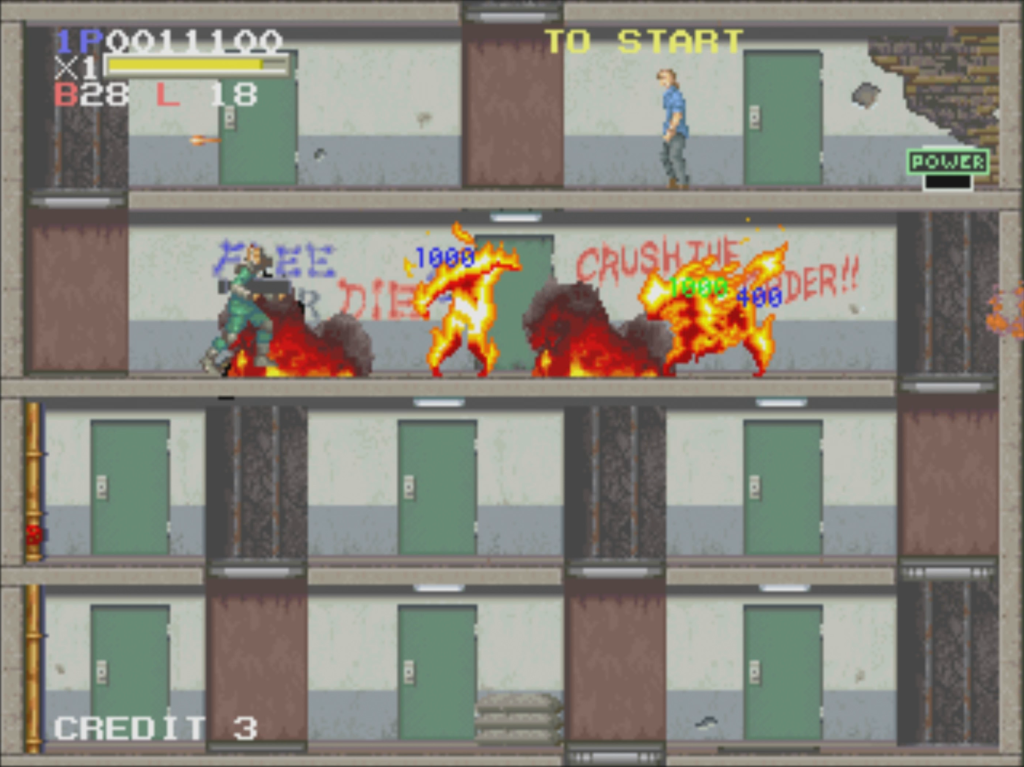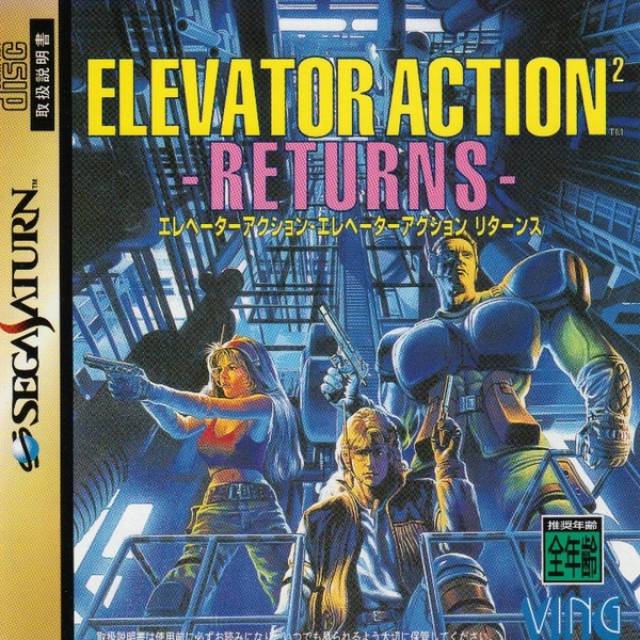
Elevator Action Returns
Sega Saturn, 1997
Developer: Taito/Ving
Publisher: Taito
Elevator Action Returns is a competent and enjoyable sprite-based arcade platform-shooter. The game enjoyed a small North American release as Elevator Action 2 at a moment in history (1994) where the popularity of 2D gaming was on the decline, and it has been largely forgotten to time as a result. EAR wasn’t ported to home consoles until 1997, when it received a Japanese Sega Saturn release. Here is the one image review of that port:
Taito released the original Elevator Action in 1983. It is perhaps better known for its 1985/1987 (Famicom/NES) home port. In Elevator Action, the player assumed the role of a secret agent as he used a series of elevators to traverse the floors of a skyscraper, collecting confidential documents and gunning down enemy spies along the way.

EAR offers more of the same, albeit with a host of upgrades gleaned from the decade of iterative improvements in game design that transpired after its predecessor’s release. In EAR the player takes the control of one of three secret agents, each with a unique style of play, as they track down a mad bomber hell-bent on burning society to the ground and building a new order from its ashes. While doing so, of course, our heroes encounter a surprising number of elevators, as they travel through everything from sewers to oil tankers.
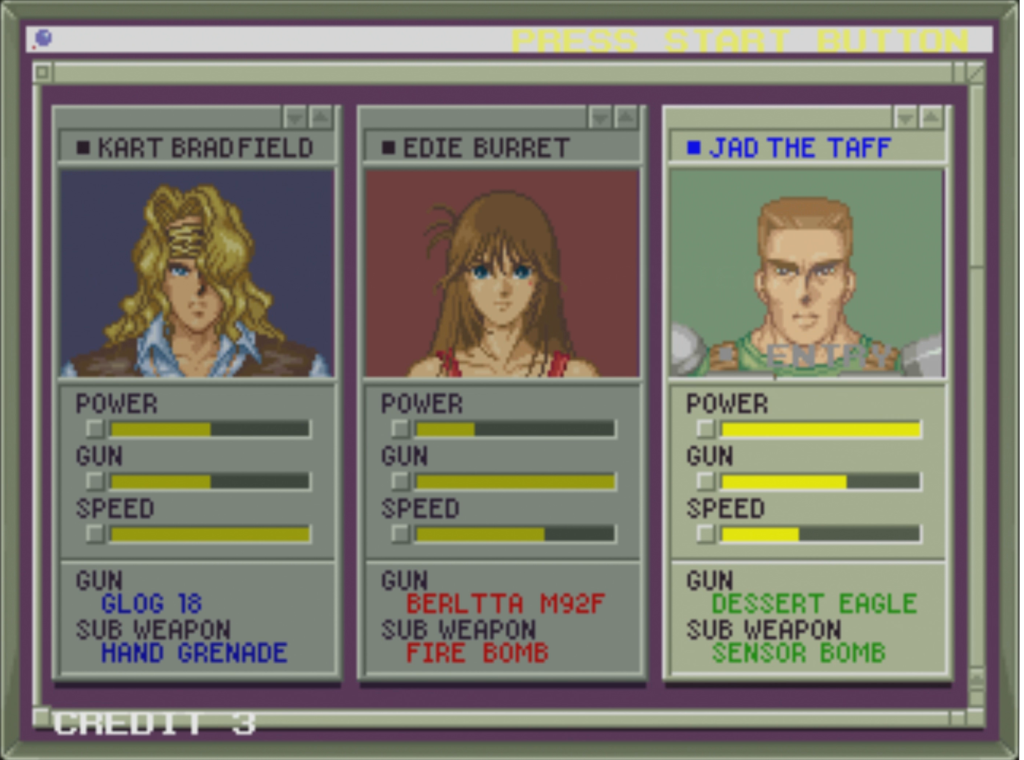
EAR on the Saturn still contains all the thrills of the arcade original: non-stop gunplay, a wide variety of destructible environments and absolutely gorgeous sprite work. With its flying shell casings and its vivid 2D fire effects, EAR must have been a sight to behold in an early 1990s arcade. To its credit, the Saturn port is a nearly flawless conversion; if the graphics, sound and gameplay aren’t “arcade perfect,” they’re damn near close.
The problem, however, is that the port hasn’t been properly rebalanced for home play. EAR is designed to munch quarters, and the home version limits the player’s credits without making any balance changes; it’s akin to walking into an arcade with less than $10 in your pocket. Further, aside from an unlockable port of the the original Elevator Action, the Saturn release contains no extras or alternative gameplay modes.
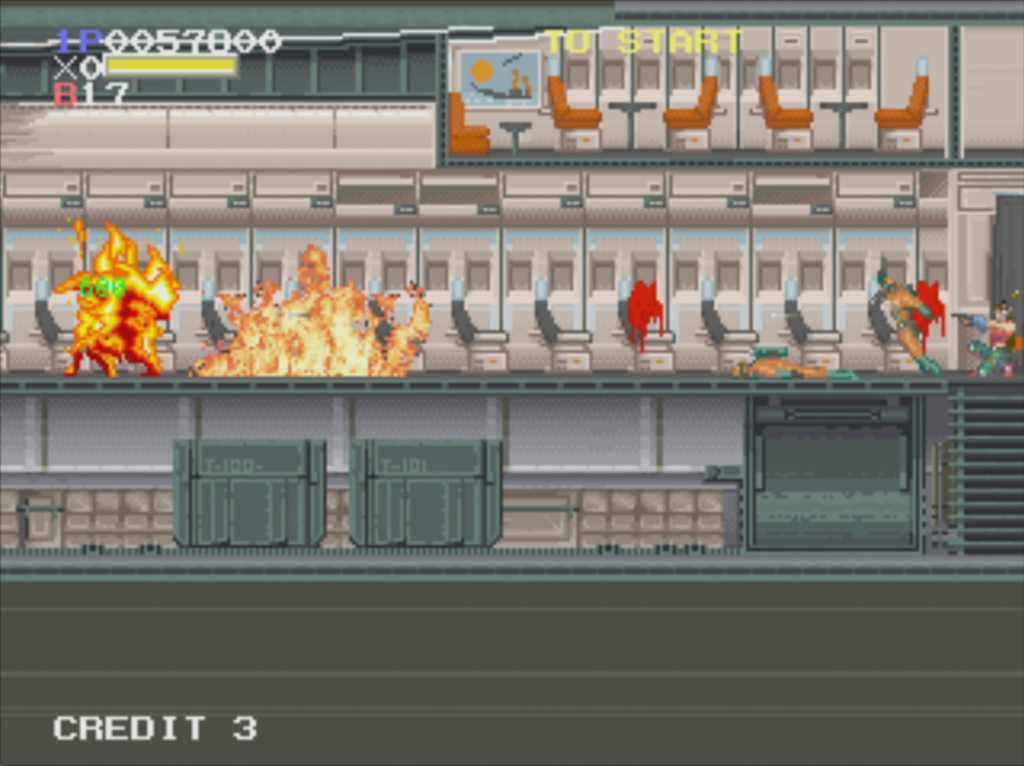
That’s not to say there’s nothing to enjoy here, and the home version EAR is entirely beatable (if not unduly frustrating) with the credits afforded to the player. At its core, the Saturn port is still the same game as its arcade counterpart. Ironically, though, that’s really why I can’t recommend it: there’s simply no compelling reason, in 2020, not to play the arcade version of EAR instead.
EAR on Saturn routinely sells on the secondary market for around $200. For anyone but the most die-hard Saturn fans, that price is simply not worth it. The port is less enjoyable than its arcade source material, which intrepid readers will likely be able find and play for free somewhere on the Internet.
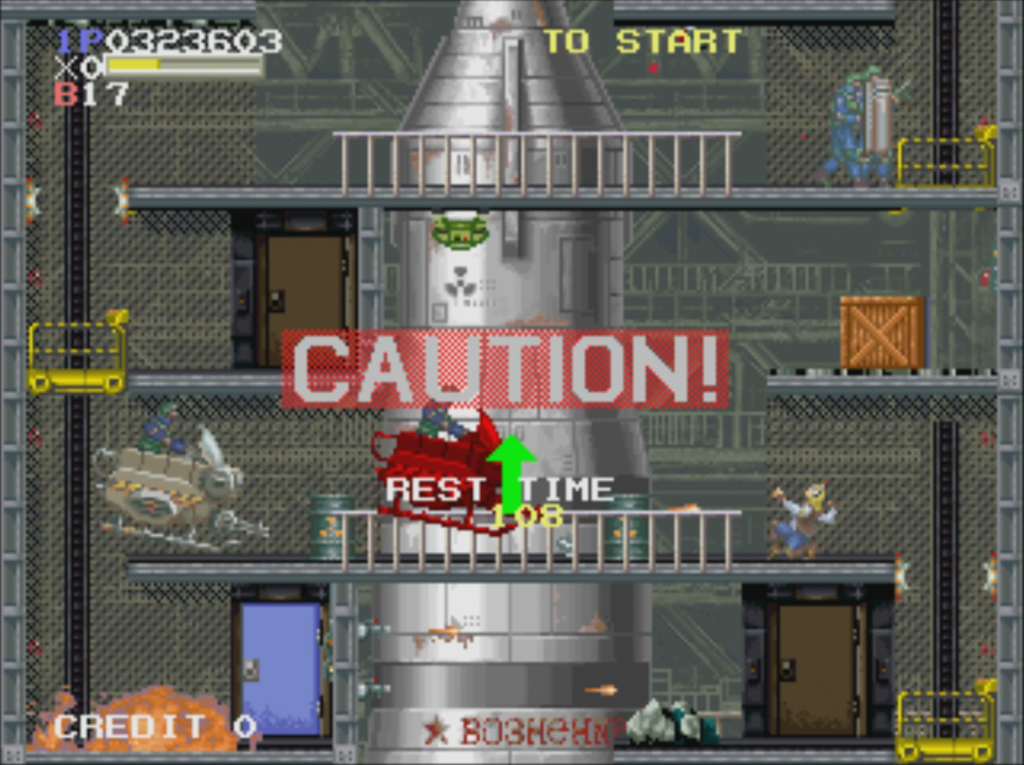
If you’ve got the means, though, and absolutely need to play this on your Saturn hardware, you probably won’t be disappointed. It’s a competent no-frills home port by 1997 standards. The question is whether that means anything to the player over two decades later.

